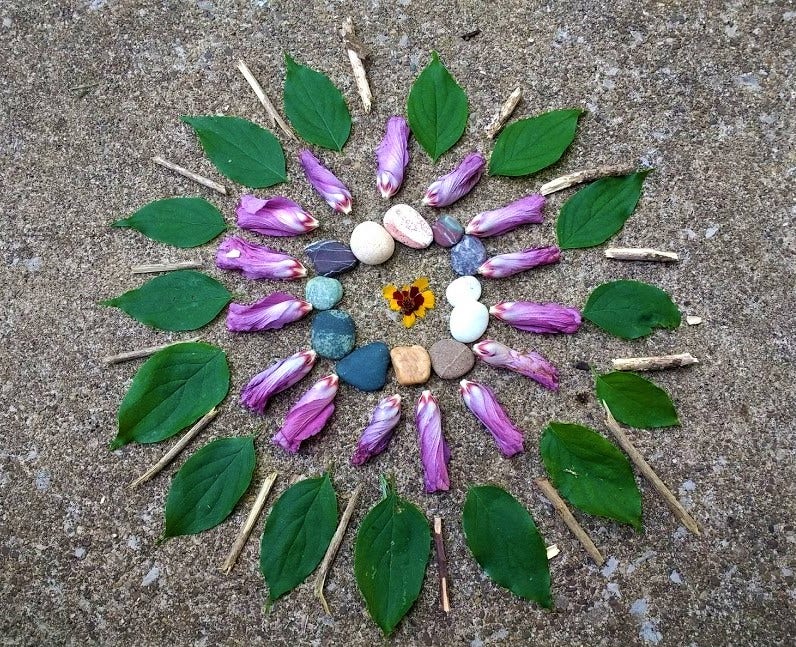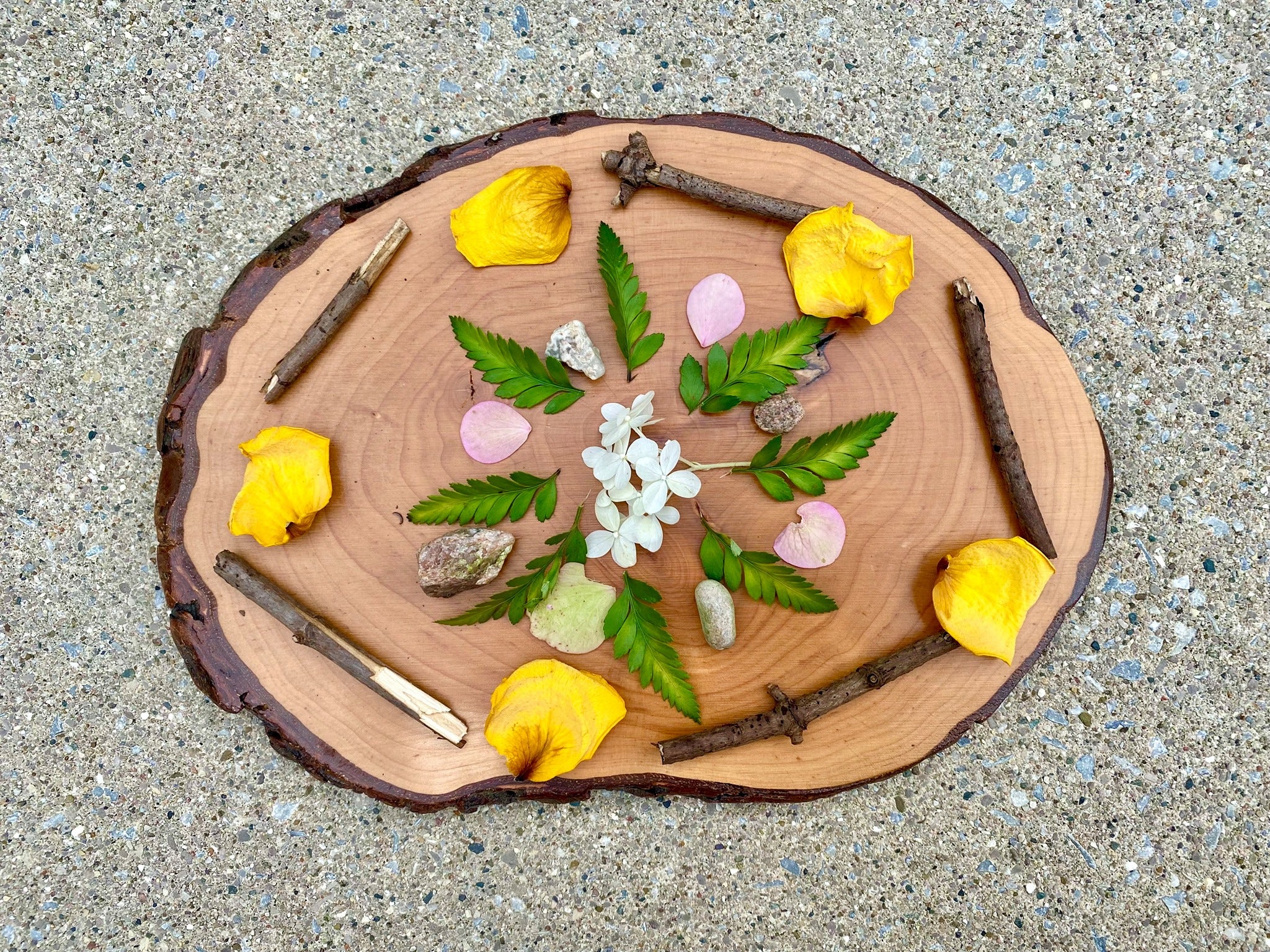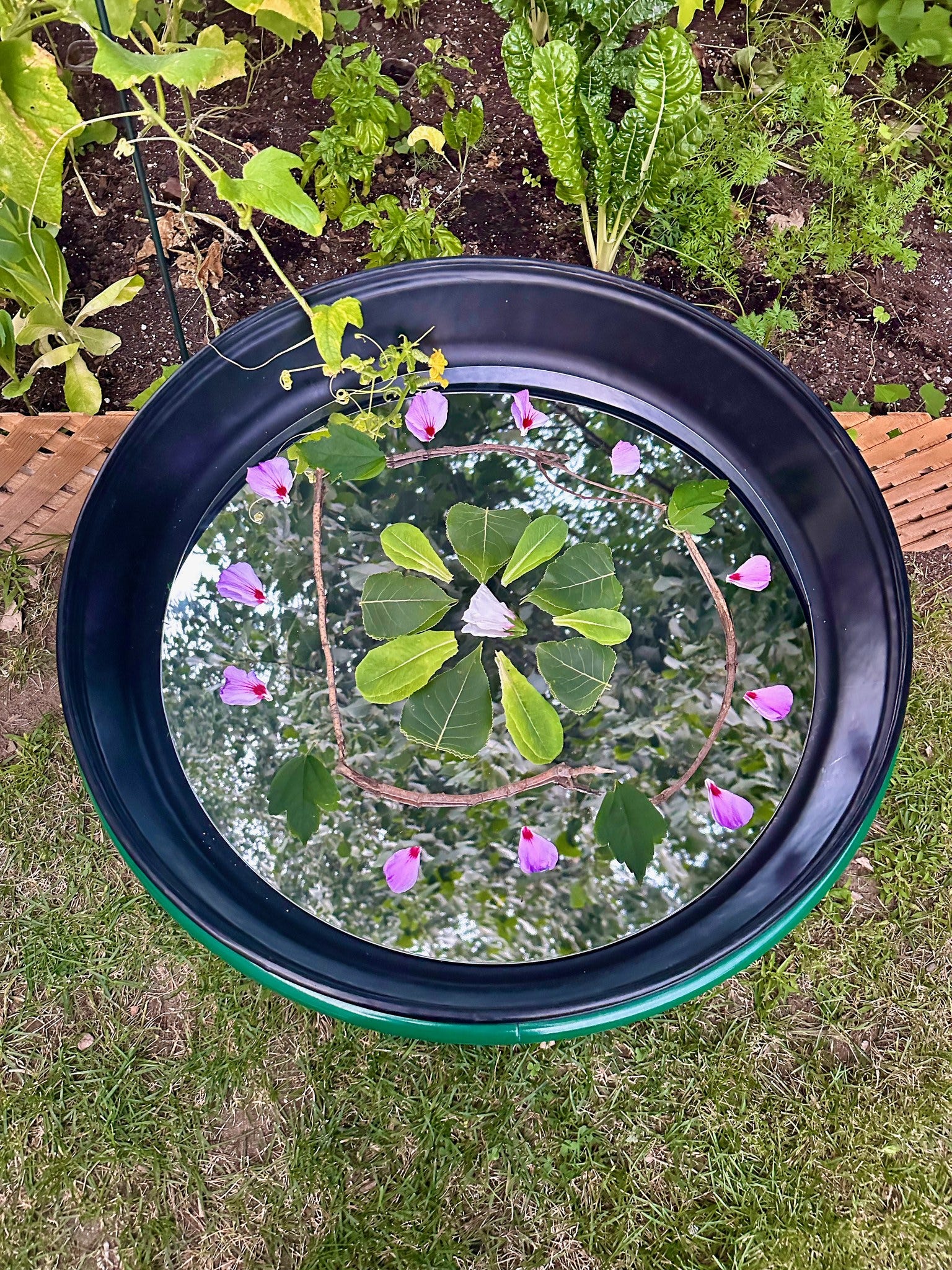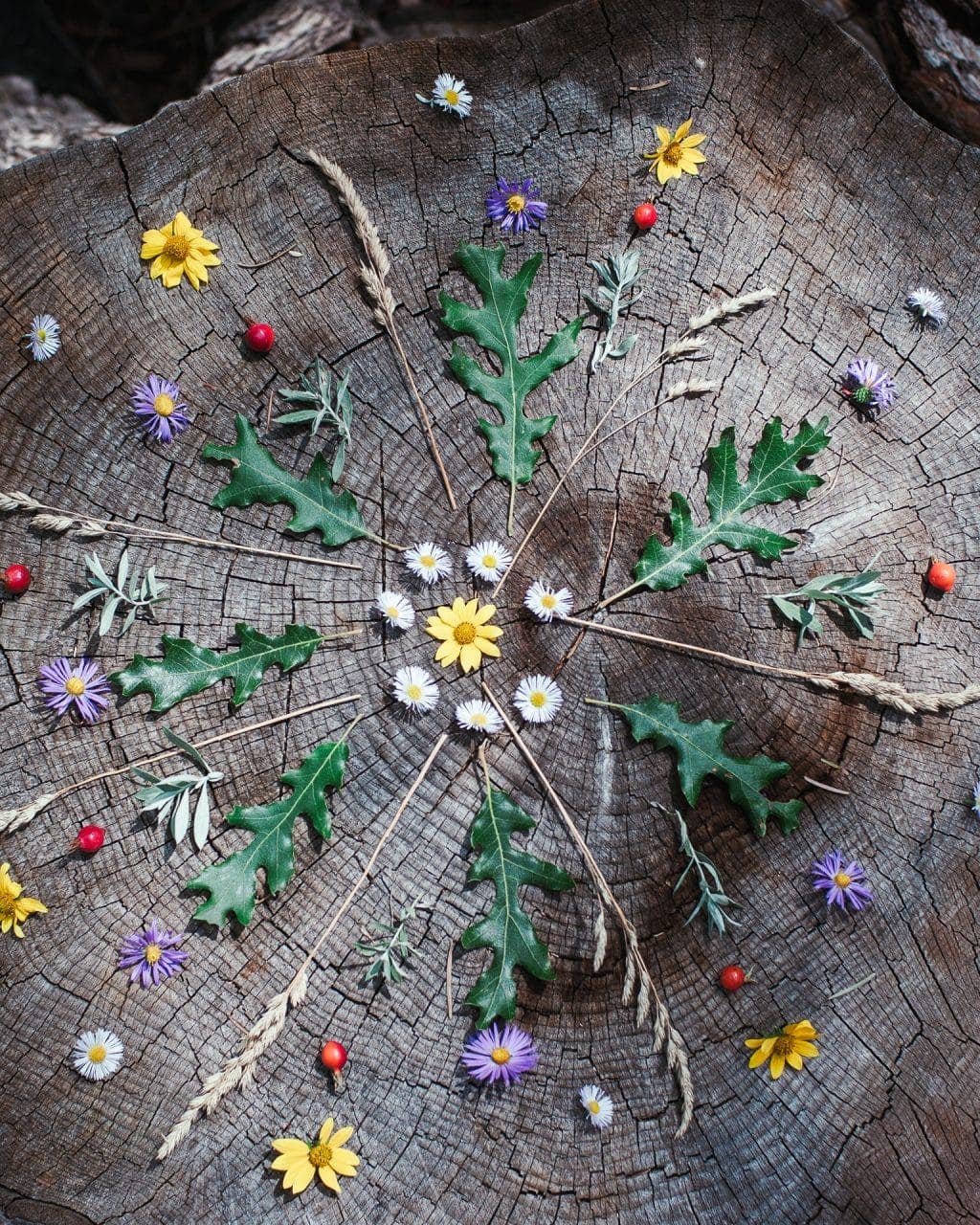

Nature-Based Mandalas: Exploring Symmetry and Art with Spring Loose Parts
Spring is the perfect season to explore the beauty of natural symmetry, creative expression, and early math through nature-based mandalas. With blooming flowers, fallen petals, and scattered seeds, the outdoors offers an endless array of loose parts to inspire children to create, design, and learn through play.
Creating mandalas from natural materials not only nurtures artistic expression—it also introduces foundational concepts like patterning, sequencing, symmetry, and spatial awareness. Whether you’re in a forest, backyard, or outdoor classroom, this open-ended activity blends math, art, and nature-based play in a meaningful way that aligns with early childhood development goals.
What Are Nature Mandalas?
A mandala is a circular design that radiates from a central point. Mandalas appear in nature everywhere—from flower petals to snowflakes—and can be recreated using natural materials such as:
- Flower petals
- Leaves
- Acorns
- Twigs
- Grass
- Pinecones
- Stones
In early learning, creating mandalas with these loose parts invites children to explore symmetry, design, repetition, and balance—all while expressing themselves creatively.

Why Mandala Making Supports Early Learning
Promotes Spatial Awareness: Arranging materials around a centre point encourages children to think about space, direction, and balance.
Develops Early Math Skills: Creating symmetrical patterns introduces concepts like halves, doubles, and rotational symmetry.
Enhances Fine Motor Skills: Carefully placing small pieces builds hand-eye coordination and pincer grasp.
Fosters Creative Thinking: Mandalas are open-ended and can be made in countless ways—there’s no right or wrong approach.
Encourages Mindfulness: The process is calming and focused, making it great for emotional regulation and concentration.






How to Set Up a Nature-Based Mandala Invitation
Materials Needed:
- A variety of spring-collected loose parts (flowers, leaves, stones, pinecones, etc.)
- A flat surface (grass, patio, wooden board, mirror tray, or even a large tuff tray)
- Optional: Chalk to draw a guide circle or string to mark the centre
How To:
- Gather together and talk about symmetry and patterns found in nature.
- Start by placing one object in the centre.
- Build outward, placing objects in a circular, repeating pattern.
- Encourage children to slow down, observe their work, and make changes if needed.
- Use language like “What comes next?”, “Can you make a mirror image?”, or “Does this look balanced?”
Extend the Learning
Photograph the mandala before nature reclaims it. Use the photo to talk about shape, balance, and colour.
Math Talk: Count the number of petals in each ring, compare sizes of natural items, or create AB/ABC patterns.
Link to Literacy: Read a book about patterns or nature (e.g., Swirl by Swirl by Joyce Sidman) and discuss how patterns appear in the world around us.
Introduce Vocabulary: Use words like symmetry, rotate, reflect, centre, edge, repeat, and pattern.
Art Connection: Provide crayons or pastels and invite children to sketch or rub over their mandalas for a mixed media experience.
Rainy Day Option: Bring materials inside and use them on a mirror base or light table for a different sensory perspective.
Benefits for the Outdoor Classroom
Nature mandalas are a perfect addition to any outdoor classroom or loose parts area because they:
- Require minimal setup
- Can be revisited and recreated again and again
- Are adaptable to any season
- Celebrate nature’s beauty and rhythms
- Offer cross-curricular learning (math, science, art, SEL)
Plus, they encourage collaboration, independence, and a deep connection with the natural world.
Finding Beauty and Balance in Nature
Creating nature mandalas is a joyful and accessible way to invite young children to engage deeply with math, art, and nature. As they gather, sort, arrange, and observe, they are developing a rich understanding of the world—and their place within it.
Encourage children to slow down, look closely, and express themselves through design. Whether it’s a simple spiral of leaves or an elaborate flower petal circle, each mandala is a celebration of creativity, balance, and wonder.
This spring, head outside and let nature be both your palette and your teacher.

